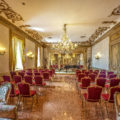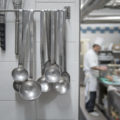“The honey / mysterious, / rich and heavy / honey, often aroma, / liquid light that falls to droplets.”
Pablo Neruda
One of the many peculiarities of the Euganean Hills, in Padua, among the most famous thermal basins in the world, castles, monasteries and beautiful vineyards, there is also a product that has conquered everyone for its goodness: honey, indeed, honeys. It is not difficult to find in the fields and among the rich vineyards hives where very busy bees come and go with the pollen of the multi-coloured flowers and plants of the Euganean territory.
Around 25 thousand different species of bees have been recognized worldwide, or rather APOIDS, namely those insects that feed exclusively on pollen. Only in Italy there are about one thousand, which today have been reduced by almost an half: in the most total silence the census has shown that over 400 species have disappeared.
We are experiencing serious environmental degradation and the bee world is telling us that it is urgent to review our lifestyle. If bees were not enough, there is an example that led Darwin to understand the complexity of the system: he said that the power of the British army depended on the old spinsters, because the spinsters kept the cats for their company, which ate the mice, whose dens were occupied by bumblebees who then visited the flowers of the red clover, which was eaten by cows that went to feed the population that thus grew strong and exuberant young men in charge of military rather than marital life. As a result the old spinsters grew and the army was increasingly imposing.
Due to their disappearance, not only our alimentation would suffer, but also that of many animal species, starting from those which nourish of berries and fruits and from their predators, with a cascading effect on the entire food chain up to the man.
Once, when we spoke of Nature in difficulty, the most used image was that of Panda, but today, in communication, it is more effective that of bees.
But let’s go back to honey. A delicacy that is also medicine, a complete, energetic and healthy food. The techniques used are those of the past.
It would seem that Hippocrates used honey as a purifying drink, while the Romans used it as a remedy in poorly succeeded wines or as a conservator immersing fruit in them, but also as an alcoholic drink: mead.
Around the AbanoRitz, on the Euganean Hills, there is the Euganean Nectar: the Euganean DOCG of the Bees. The main types of honey produced in the area of the Euganean Hills, rich in countless botanical species, are that of Acacia, Wildflowers, Chestnut and Honeydew, in many cases obtained from organic crops.
A few minutes far from the AbanoRitz, you can also visit the Monastery of San Daniele, reachable by car, but also with a pleasant walk on the small mountain with the same name. An oasis of peace and quiet inn order to regenerate body and spirit: meditation and prayer in the small church, a journey through history in the villa-museum and natural handicrafts in the museum shop. These are mainly made of honey.
We are waiting for you to discover the honey of the Euganean Hills, one of the many gastronomic riches of our territory.










